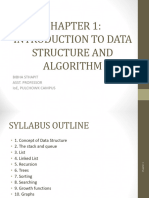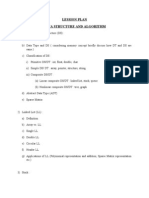0% found this document useful (0 votes)
197 views4 pagesDSA Complete Notes
The document provides a comprehensive overview of Data Structures and Algorithms (DSA), detailing the types of data structures including primitive and non-primitive structures, as well as various algorithms for searching, sorting, and graph traversal. It covers essential concepts such as trees, graphs, and their traversals, along with algorithmic strategies like recursion, dynamic programming, and greedy algorithms. Additionally, it discusses time and space complexity, emphasizing the practical applications of DSA in fields like databases and networking.
Uploaded by
Kartik SrivastavaCopyright
© © All Rights Reserved
We take content rights seriously. If you suspect this is your content, claim it here.
Available Formats
Download as PDF, TXT or read online on Scribd
0% found this document useful (0 votes)
197 views4 pagesDSA Complete Notes
The document provides a comprehensive overview of Data Structures and Algorithms (DSA), detailing the types of data structures including primitive and non-primitive structures, as well as various algorithms for searching, sorting, and graph traversal. It covers essential concepts such as trees, graphs, and their traversals, along with algorithmic strategies like recursion, dynamic programming, and greedy algorithms. Additionally, it discusses time and space complexity, emphasizing the practical applications of DSA in fields like databases and networking.
Uploaded by
Kartik SrivastavaCopyright
© © All Rights Reserved
We take content rights seriously. If you suspect this is your content, claim it here.
Available Formats
Download as PDF, TXT or read online on Scribd
/ 4





























































































